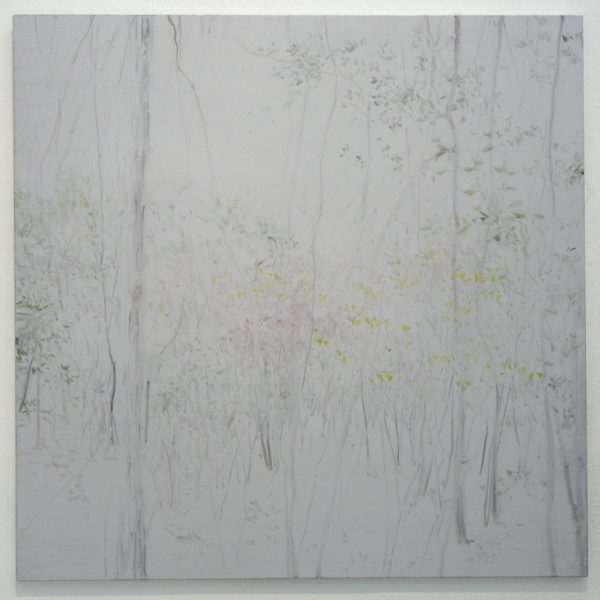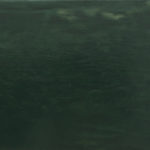







Prefectural Museum of Art, Hyogo, 2009




A rapport with the shades and depths of the unknowable presence
In the 1980s, Yasue Kodama started her artistic career by painting still life. In the 90s, she turned to abstract painting. Her style in those days was characterized by vivid and dynamic brush strokes against a white background. According to Kodama, the catalyst for her change of direction was her intention to explore something not merely visible within the domain of painting. Another reason was the simple fact that she was fascinated by the physicality of oil paints and the canvas.
After pursuing abstract painting for nearly 10 years, Kodama started thinking about incorporating different perspectives into her work. What she sought to express was how she related to the world, rather than solely the act of painting. In other words, the relationships between human beings, society, and the world were the themes she wanted to assimilate into her work. Employing physical objects as motifs, Kodama once again shifted her style into the arena of figurative painting. Dismissing the mere act of capturing physical existence as it is, she found it more important to visualize primeval sensibilities on the canvas, reflecting on how she first came into contact with this world.
From her post-abstract painting period, she started using motifs such as tree branches and cherry blossoms, as they would be viewed from below, set against a background of sky. Her motifs also included goldfish swimming freely between the shallow and deep water covered in waterweed. In 2009, Kodama commenced the Deep Rhyme series. The Japanese title for Deep Rhyme, “Shinin”, is a word coined by a poet friend of hers while looking at her paintings. “Shinin” implies “a rapport with the shades and depths of the unknowable presence”. Kodama began working more on paintings inspired by extraordinary sights she encountered on ordinary days. In the Deep Rhyme series, Kodama endeavored to capture the deep shades and subtle nuances of nature the sensibilities of our consciousness are yet to register. Using distinctive painting techniques, paints are layered on top of each other. Each layer is harmoniously aligned with the rest, and each part embodies the whole. We could express this harmony as ‘rhyme’ in deference to the title of the series, Deep Rhyme.
In 2012, Kodama started a series of pieces entitled Deep Rhyme – the note of water. The original style of the series was watercolor painting on Hahnemühle paper, imbued with charcoal and opaque watercolors. Afterwards, within this series, Kodama gradually proceeded to transition into oil paintings. Digesting her own ephemeral moments, Kodama wove these as narratives into the series, representing the encounters as pictorial experiences. These moments included the experience of fog instantly enveloping her in a wooded area, finding ice which had retained the shape of water in a pond on an early morning in the middle of winter, and seizing the moment when snow on a frozen pond turned to sleet and revealed a mirror-like image of the surrounding landscape. Kodama has given subtitles, such as “sleet”, “thin ice” and “drizzle”, to each piece. These represent the existence of formless water as her central subject matter.
Kodama’s paintings comprise multiple layers of paint using her own distinctive methods. In the initial phase of her creation process, Kodama applies warm advancing colors and cold receding colors in the first layer, after which she paints the actual scenery. She then lays the canvas on the floor, and applies paints diluted with a solvent across the entire canvas. Afterwards, Kodama adds touches to the top layer, and uncovers paint from the lower layer. She repeats these complex procedures over and over.
In the Deep Rhyme – the note of water series, Kodama additionally applied pearl pigment in order to express the texture of fog obscuring the space on the canvas. The finish of her paintings is influenced by a range of factors, including how different seasonal temperature variations affect the drying times of the paint applied, the specific gravity each paint has, and the slightly relaxed surface of the canvas. How the paint sets fluctuates because of these parameters. As such, with the semi-serendipitous nature oil paints possess, a painting is finally created. Upon completion, Kodama attempts to recall a sense of the extraordinary – the entry point to her creation – that she felt in nature. However, by Kodama’s own account, she can no longer distinguish whether her singular experience is derived from nature, or from a sort of imaginary pictorial experience. Kodama’s art emerges from somewhere between the phenomena the color profiles provoke, and the pictorial aesthetics she aims to realize.
Kodama explains that the attitude of human beings (or Kodama herself) toward the nature is about “conscious intent” (to take action towards it) and “the entrusting of oneself to nature”, and “the palpable existence of water and the perception of the impalpable presence is found between the physical and the image. This is […] what painting means to me.”
(K.I.)














